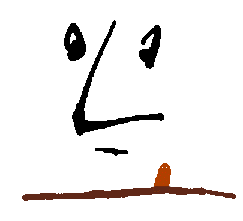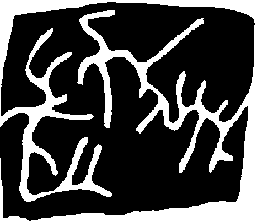The wood worm
with additional notes to its maintenance1960 publishing house - The house friend - Hamburg
At the point of the front part is the muzzle (A) with that uncommonly strengthens dentures. The tooth of the wood worms resembles that of the time -, some researchers still think that it is identical to this.
The stomach (B) is situated in the center section. Besides this there's nothing situated.
In the back part we find the exhaust (C), on whose method of operation we will talk later on.

Way of life: The wood worm lives, as its name says, in the wood. It nourishes itself, also this says its name, of wood. It dies, as its name does not say, but we assume so, if no more wood is there, from which it could live.
Moving itself : Already in the early Middle Ages scientists and interested amateur handicraftsmen placed the question about the progressive movement of the wood worm. Up to then one had assumed the fact that it is curling itself or winding like all other worms. In the year 1078 however brother Benediktus, a monk of the Swiss monastery St. Gallen, caught an older wood worm, which front part was a bit above of a praying desk. (it is to be assumed that it must have been a kind of senil animal.)


Brother Benediktus thus catched the worm and pulled quite slowly, because as a monk he had a lot of time. Now he saw that the diameter of the hole was not larger, as that of the worm. He got interested. He sawed the praying desk and put the worm into the out-gnawed passage. It fit always quite exactly. Now brother Benediktus had his great idea. How, he considered, can the worm curl, if there's no space beside ?
In this moment the abbott of the monastery appeared in the cell and insulted in fluently latin the monk because of the sawed praying desk. But this religious thunder weather did no impression to Benediktus, which now had only wood worms in his head.
In the following night he left the monastery by the supplier door , but not without smuggling the wood worm into the abbott bedstead. (according to the chronicle of St. Gallen however the overnext abbott broke down with this furniture.) During five years Benediktus walked with an belly shop and sold holy pictures all over the country. Then he had earned cash enough, to establish himself in Buchstadehude (the today's Buxtehude) as a private scholar, where he dedicated only to study the wood worms and its progressive movement. In the year 1121 he died, without solving the problem.
The interest nevertheless remained awake during many centuries.
Home Sitemap Fun pages Feedback eMail